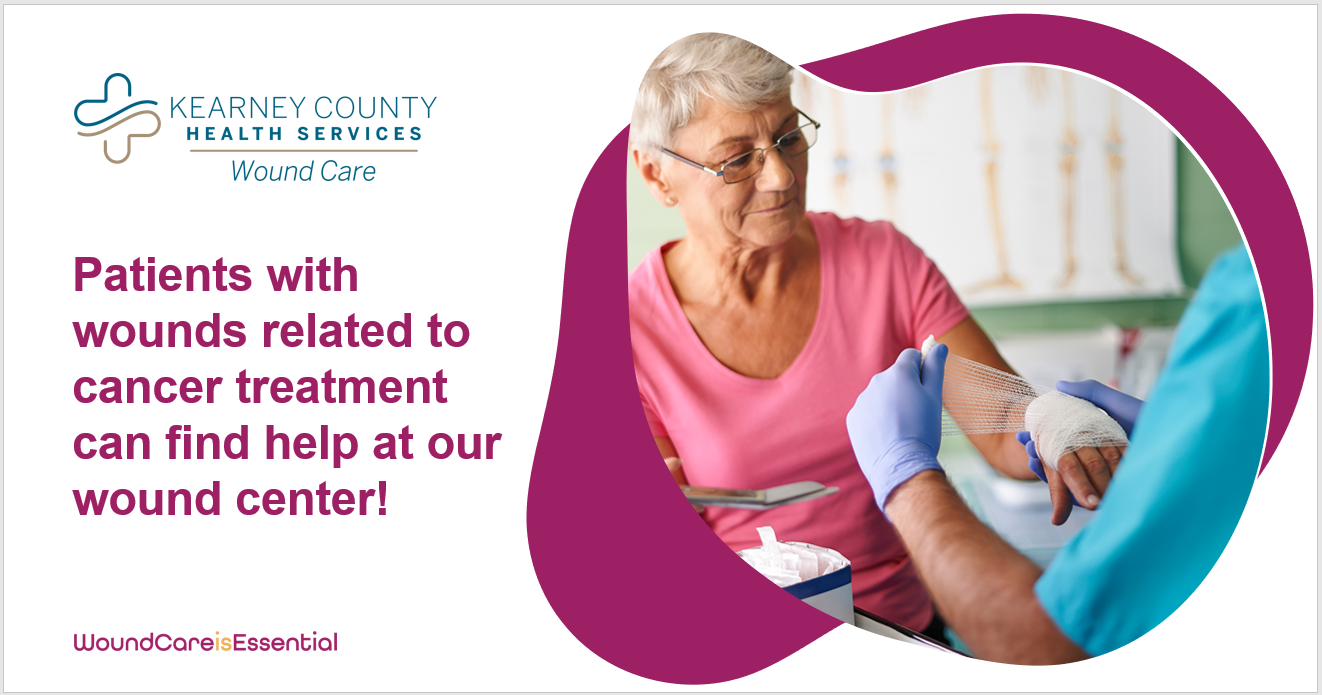Learn the the Side Effects of Breast Cancer Treatment

Breast cancer is one of the most common cancer diagnoses in the United States, affecting more than 4 million people.1 Following diagnosis, your healthcare provider will decide on a suitable treatment plan.
While this is a necessary part of the battle, unfortunately, most methods of treatment carry the risk of unwanted side effects of breast cancer treatment. Treatment-related side effects may cause external damage to the body, as well as internal damage to tissues.
Surgical Wounds
Breast cancer can be surgically treated by mastectomy, which involves removal of the breast tissue. Normally, the surgical incision is closed using stitches and eventually forms scar tissue. However, in some cases, proper healing is delayed, and the wound has trouble closing. Additional care may be required in order to keep the area clean and keep infections at bay.
Surgery-Related Necrosis
The mastectomy procedure may damage blood vessels at the surgical site, resulting in lack of proper blood flow. This can lead to necrosis, which is the death of the surrounding tissue. Dying tissue will start to turn black and may develop open sores, increasing the risk of infection.
Radiation Burns
Radiation therapy is often needed to shrink tumors in the breast. This treatment primarily destroys cancer cells but can also affect normal healthy cells like skin cells. In response to radiation, some people may develop radiation burns, also referred to as X-ray dermatitis or radiation dermatitis. Radiation burns resemble sun burns and can cause skin to become sensitive and redden, peel or blister.
Soft Tissue Necrosis
Radiation can also cause internal damage to muscles, organs or fatty breast tissue. This is referred to as soft tissue radionecrosis and is caused by scarring of the blood vessels, leading to decreased blood flow and death of the surrounding tissues. Soft tissue radionecrosis may not become apparent until many months or even years following cancer treatment.
Bone Necrosis
Like organs and soft tissue, bones can also be negatively impacted by radiation. Damage to blood vessels may result in death of the bone tissue, called osteoradionecrosis. This is a rare complication and is usually observed more than a year after cancer treatment.
A Wound Healing Center Can Help!
If you or a loved one has a non-healing wound related to breast cancer or cancer treatment, wound care is essential. To facilitate wound healing, the clinicians at the KCHS Wound Care Clinic are trained in both traditional and advanced therapies.
The wound care team at KCHS is dedicated to determining the optimal treatment to address each individual situation. Treatment plans are designed to complement the care your primary physician provides, ensuring your health care team is always working together to provide treatment that’s right for you.
If you need help with side effects of breast cancer treatment, call the KCHS Wound Care Clinic at 308.832.6535 or Visit our WEBSITE for more information
REFERENCES
- Cancer Treatment & Survivorship Facts & Figures 2022-2024. Atlanta, GA: American Cancer Society.
- DePolo J. Radiation Therapy Side Effects. Breastcancer.org. Updated December 16, 2021. https://www.breastcancer.org/treatment/radiation/side_effects
- Kim YS, Yoon JH. Osteoradionecrosis of the Anterior Thoracic Wall after Radiation Therapy for Breast Cancer. J Korean Soc Radiol. 2019;80(5):1003-1007.
doi: 10.3348/jksr.2019.80.5.1003
- Necrosis of the Breast Skin Related to Mastectomy. Breastcancer.org. Updated February 9, 2022. https://www.breastcancer.org/treatment/surgery/reconstruction/corrective/necrosis-skin
